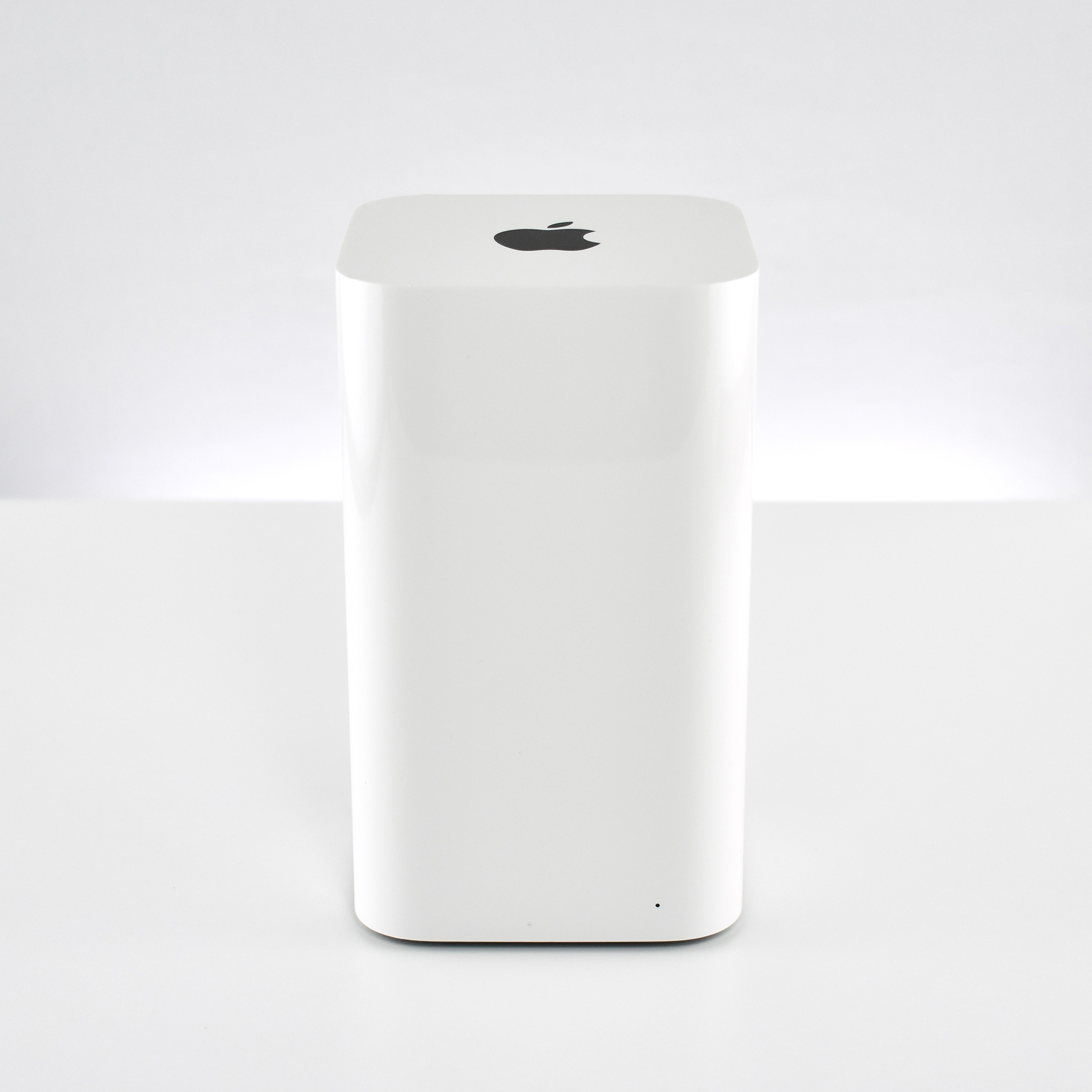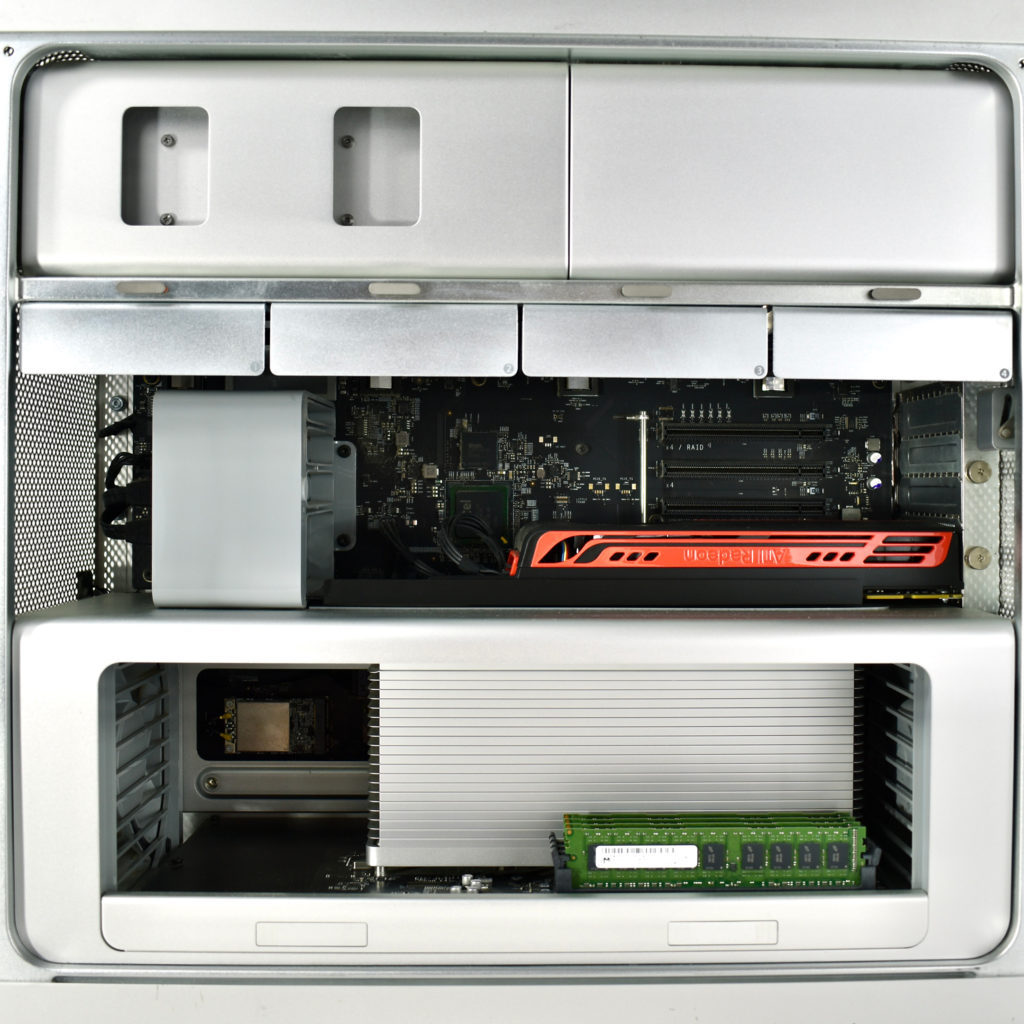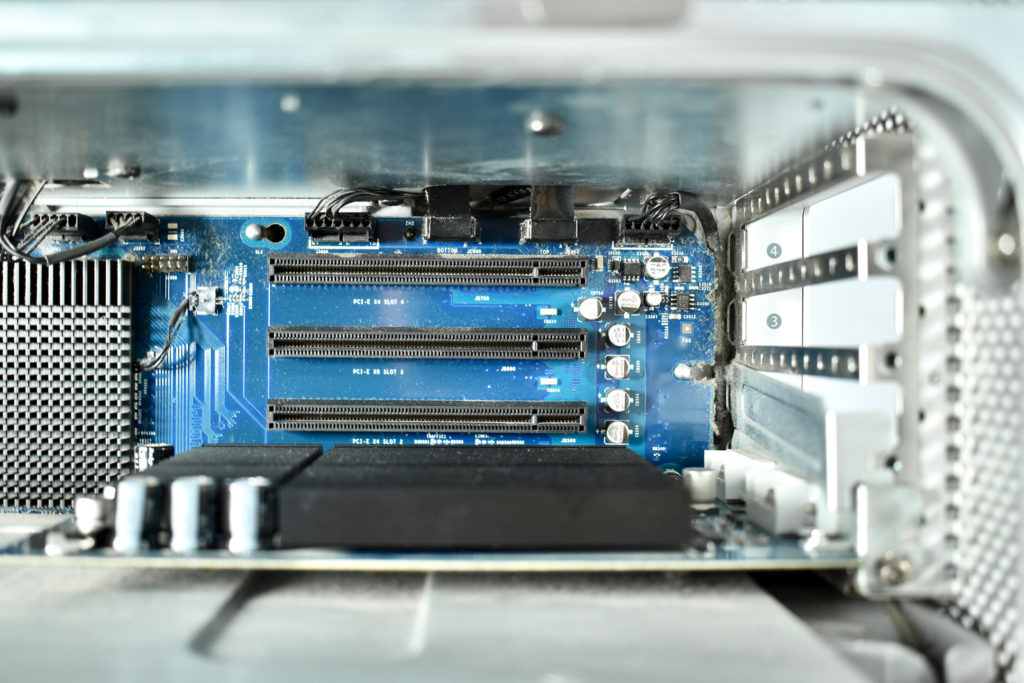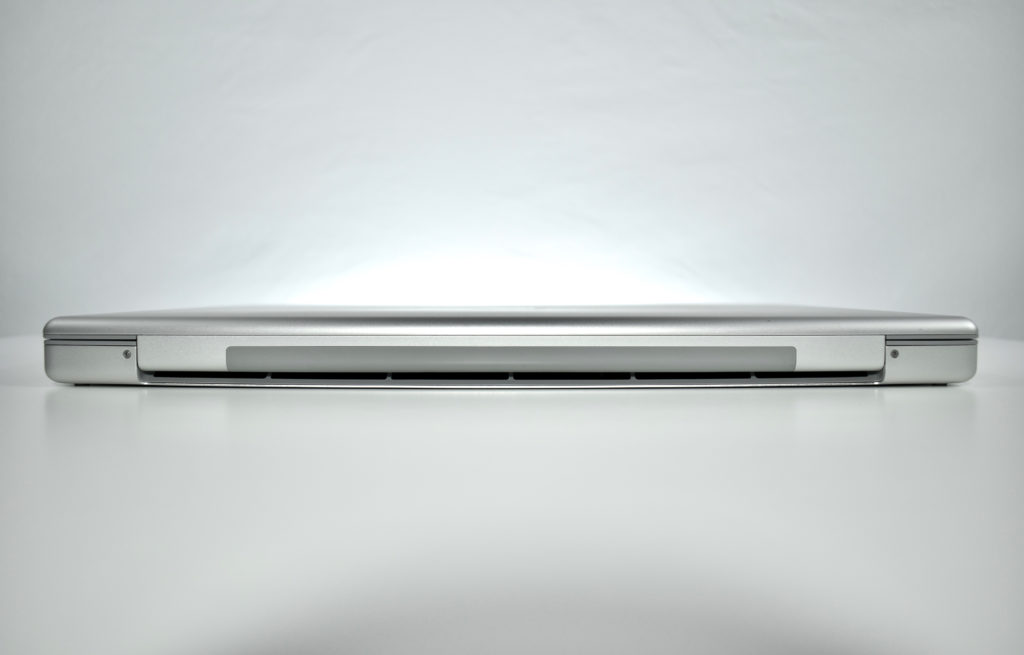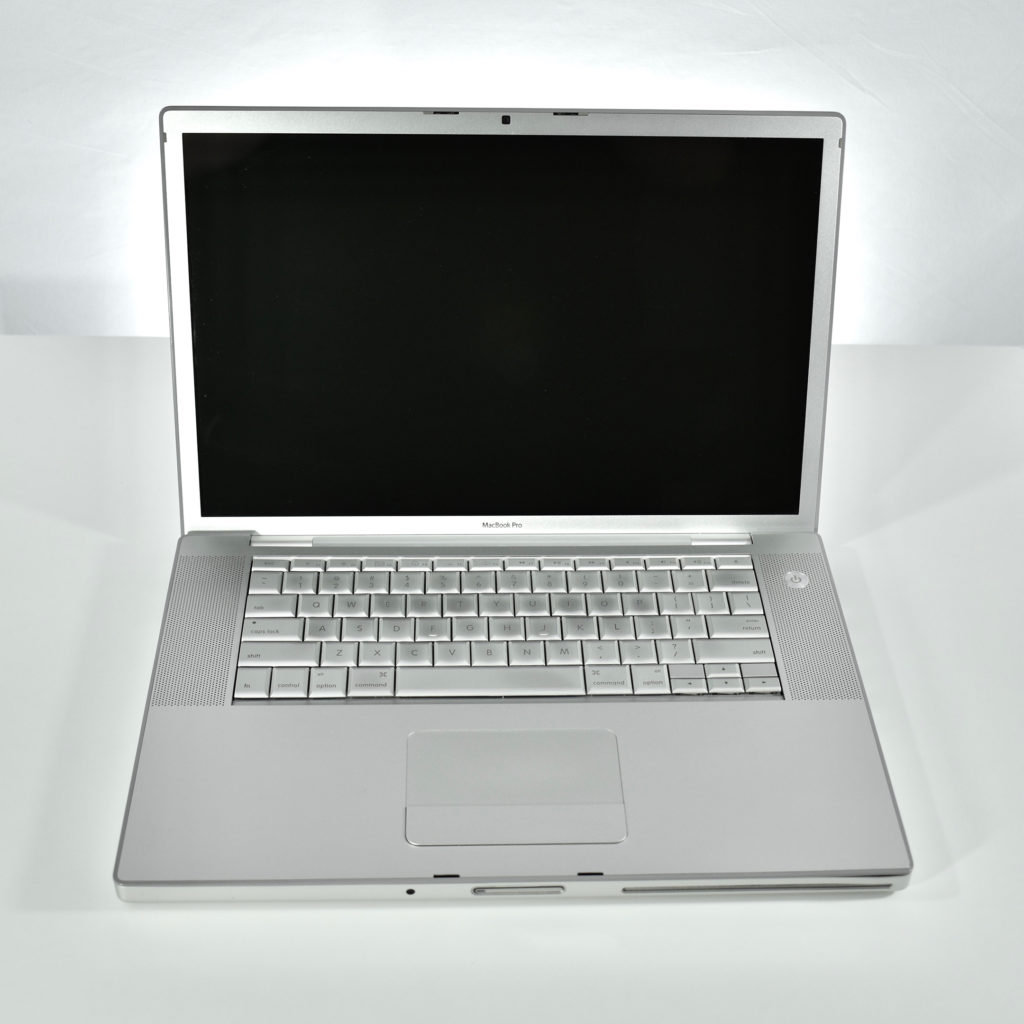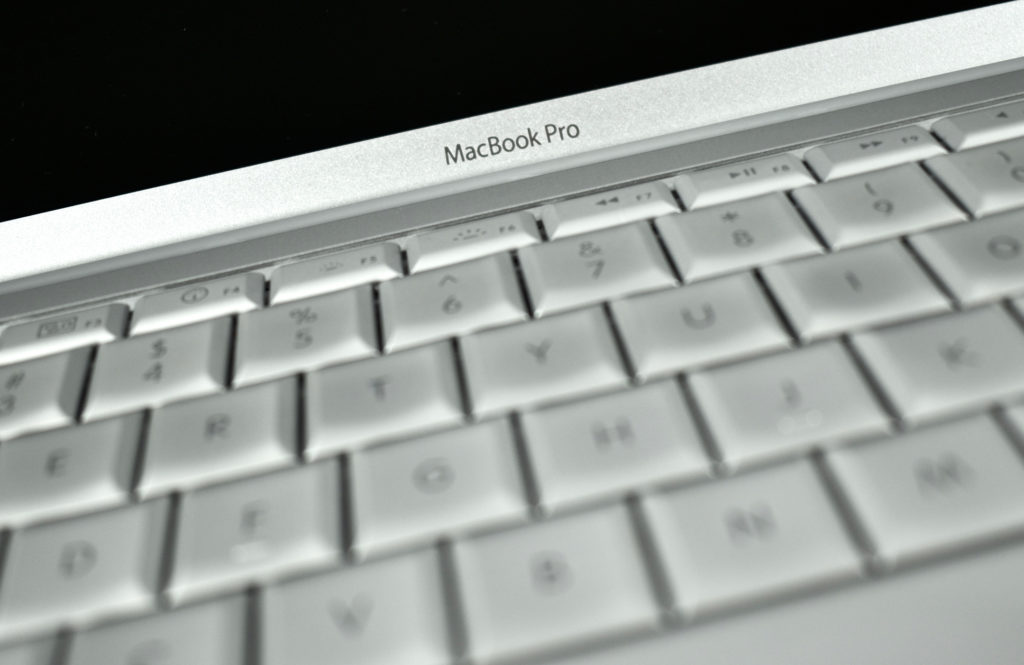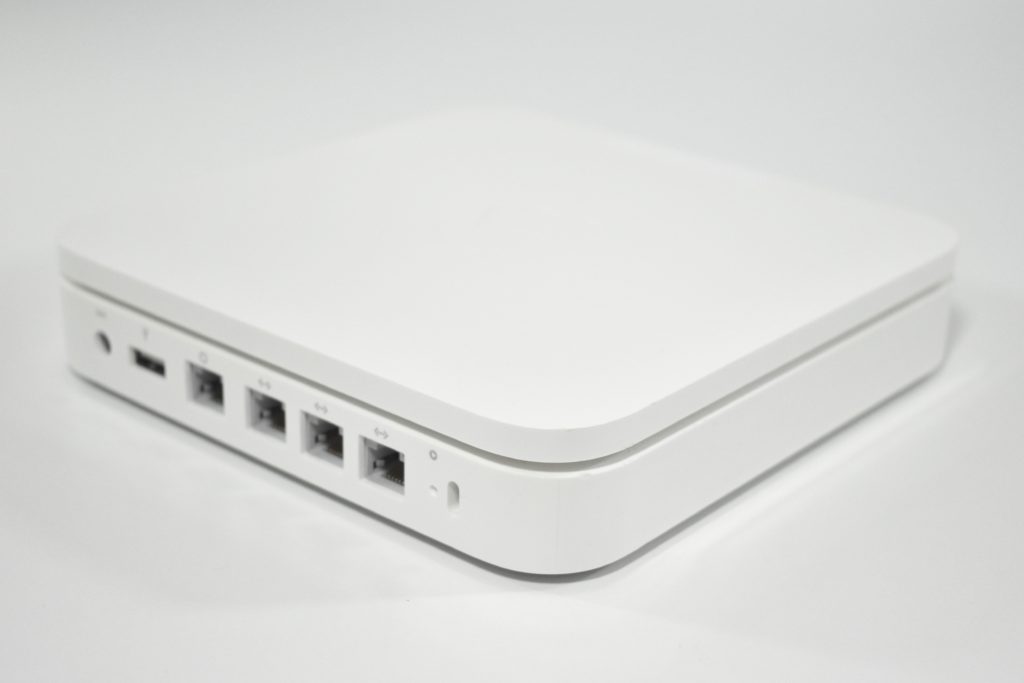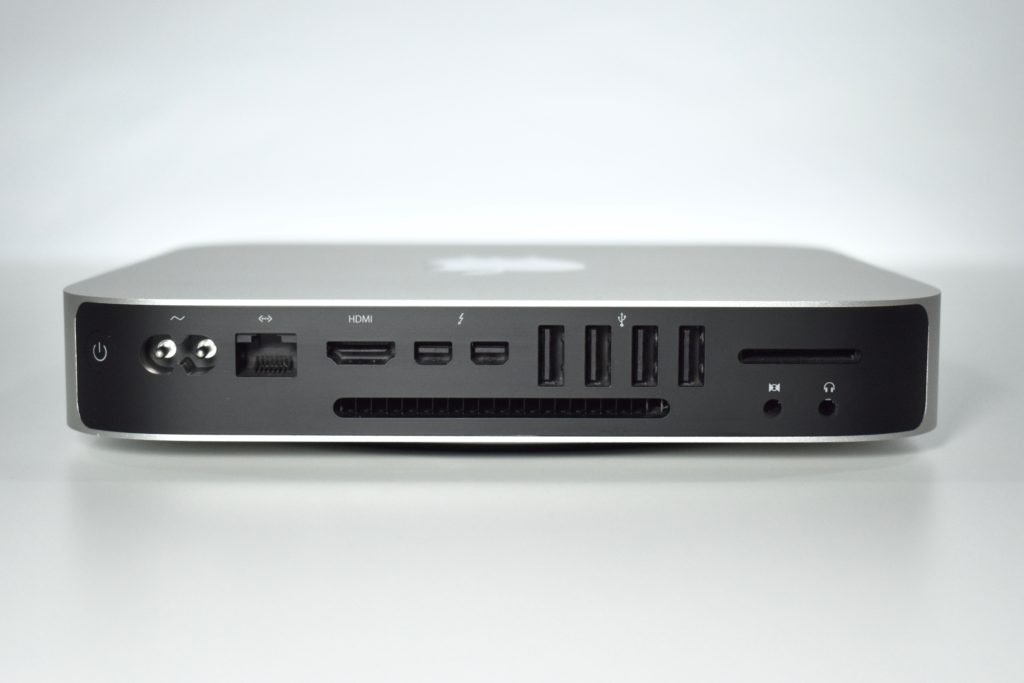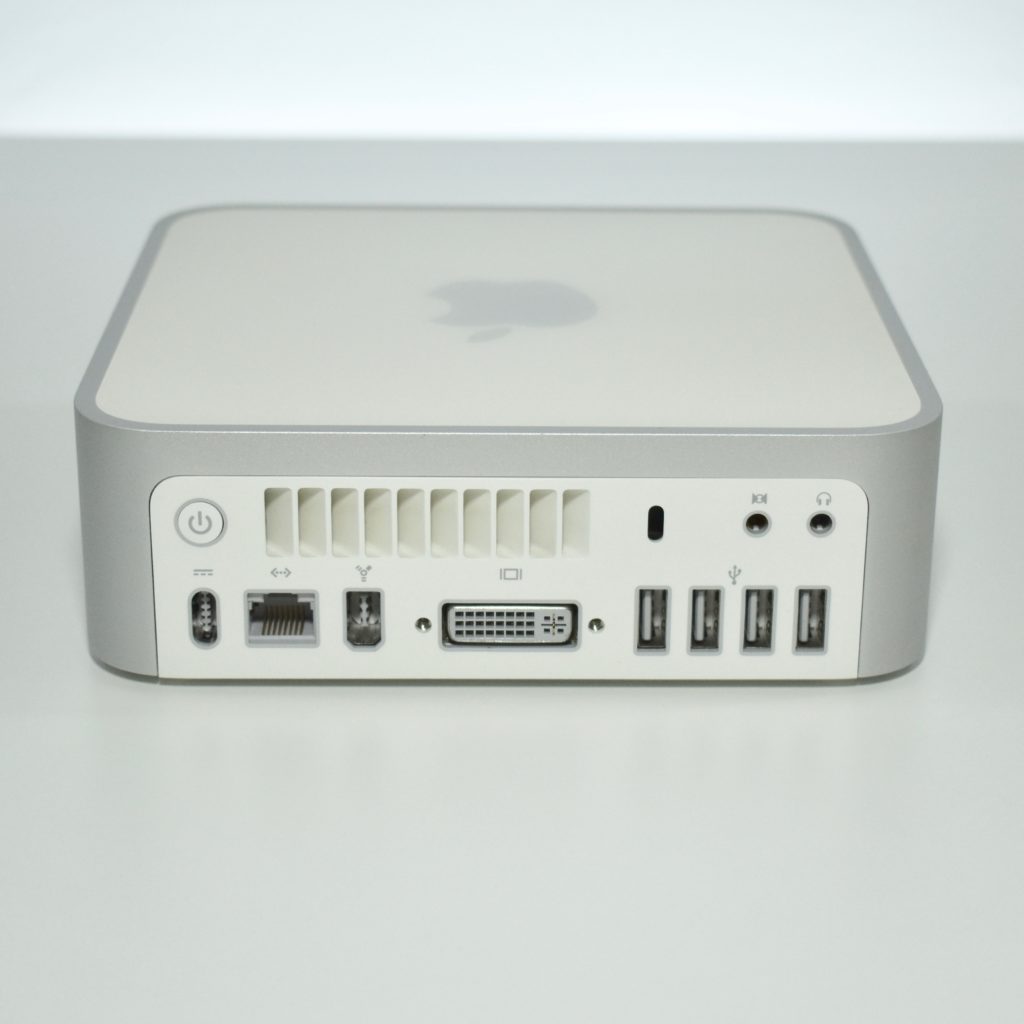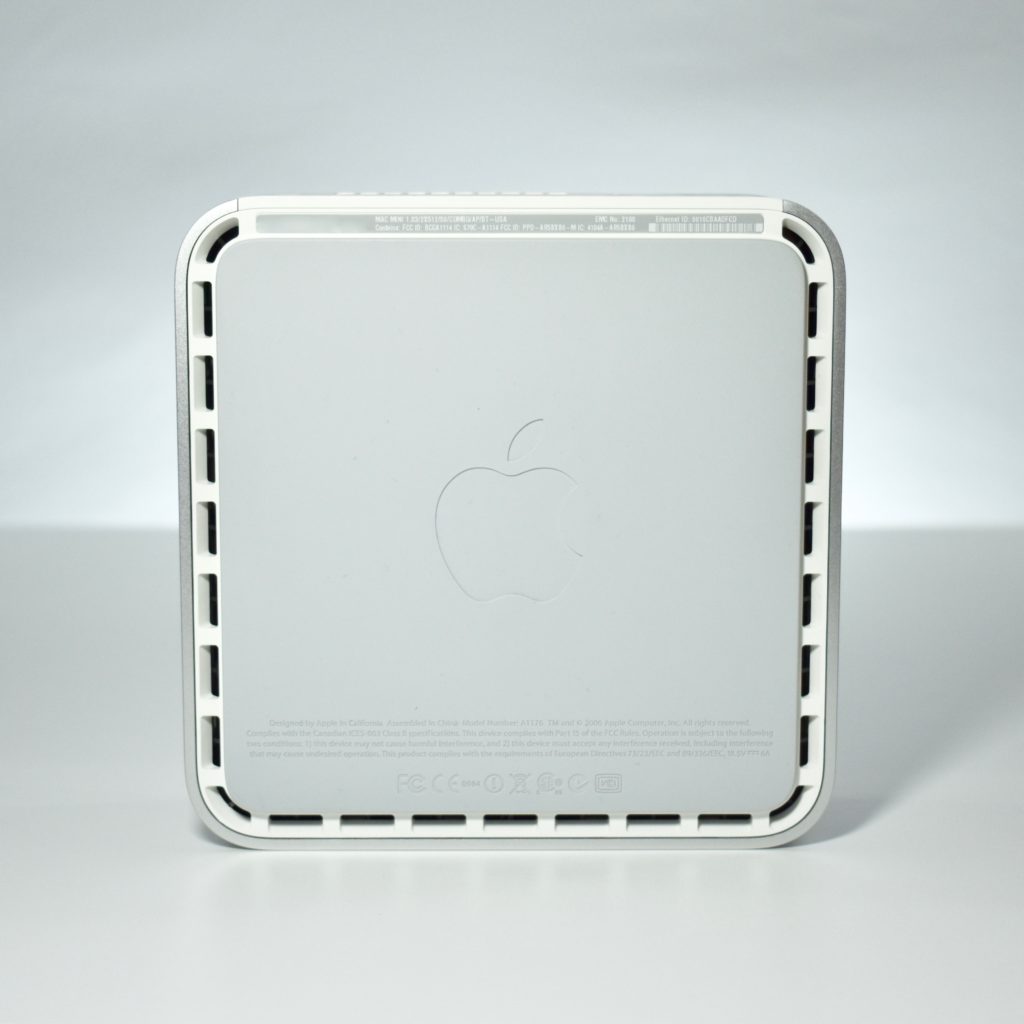The AirPort Extreme was a wireless base station that combined the functions of a router, network switch, wireless access point, Network-Attached Storage (NAS), and other features. Apple released a total of seven AirPort Extreme Base Station models. This Generation 6 was the final model.
The original version of the AirPort Extreme Base Station used the “flying saucer” form factor. Generations 1–5 used a flat square form factor with rounded corners. The final Generation 6 model kept the concept of a square with rounded corners, but the base station used a tower design, measuring 3.85 inches x 3.85 inches and 6.6 inches tall.
The Generation 6 AirPort Extreme 802.11ac was announced on June 10, 2013. It offered three-stream 802.11ac Wi-Fi at 1.3Gbit/s (three times faster than 802.11n). Time Machine was supported in this model using an attached external USB hard drive.
The packaging listed the following features:
- Simultaneous dual-band 802.11ac Wi-Fi with up to three times faster performance than 802.11n
- Compatible with 802,11a/b/g/n/ac-enabled computers, networks, and Wi-Fi devices such as iPhone, iPad, Pod touch, and Apple TV
- USB port to share a printer or hard drive and access it wirelessly
- One Gigabit Ethernet WAN port to connect to a DSL or cable modem or Ethernet network; three Gigabit Ethernet LAN ports
- Wi-Fi Protected Access (WPA/WPA2) security and built-in firewall protection
- Ability to set up a separate guest network to share your Wi-Fi connection





